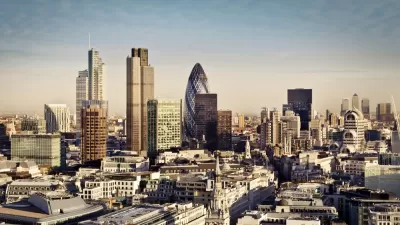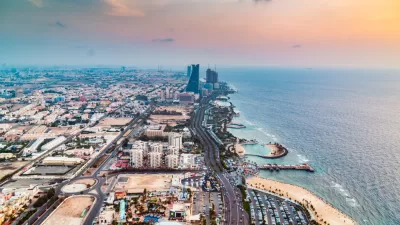An article by Steven Snell summarizes the drawbacks of building vertical cities.

"Taller we continue to build, and in greater numbers, but it’s no longer about getting closer to heaven, at least not in the literal sense," writes Snell. "There are many reasons why: a symbolic gesture of power and cultural influence; a city’s emergence on the 'global stage'; a stable investment opportunity for international finance portfolios; an efficient use of land. Whatever the reason, however, erecting tall buildings, or more totally, tall cities, has numerous negative ramifications."
Some of the negative consequences of tall buildings, as cited by Snell in the article, include the isolating effects of high-rise residential buildings, the heat island effects induced by tall buildings, shadows andloss of natural light, the negative impacts of many tall buildings on the walkability of the street below, and the danger tall buildings present to birds. We're sure there are more, as well.
Once we acknowledge that tall buildings have drawbacks, can we imagine and build a city that finds the right balance between the built and natural environments: "Taken en masse, if we recognize the negative impacts of a collection of tall buildings, we might begin to ask questions seeking an alternative type of city. One that isn’t tall. One that isn’t of parking lots and big box stores and sprawling communities either. Just one that uses land wisely, however complex enacting that principle can be."
FULL STORY: Should we stop building tall cities?

Alabama: Trump Terminates Settlements for Black Communities Harmed By Raw Sewage
Trump deemed the landmark civil rights agreement “illegal DEI and environmental justice policy.”

Planetizen Federal Action Tracker
A weekly monitor of how Trump’s orders and actions are impacting planners and planning in America.

How Atlanta Built 7,000 Housing Units in 3 Years
The city’s comprehensive, neighborhood-focused housing strategy focuses on identifying properties and land that can be repurposed for housing and encouraging development in underserved neighborhoods.

In Both Crashes and Crime, Public Transportation is Far Safer than Driving
Contrary to popular assumptions, public transportation has far lower crash and crime rates than automobile travel. For safer communities, improve and encourage transit travel.

Report: Zoning Reforms Should Complement Nashville’s Ambitious Transit Plan
Without reform, restrictive zoning codes will limit the impact of the city’s planned transit expansion and could exclude some of the residents who depend on transit the most.

Judge Orders Release of Frozen IRA, IIJA Funding
The decision is a victory for environmental groups who charged that freezing funds for critical infrastructure and disaster response programs caused “real and irreparable harm” to communities.
Urban Design for Planners 1: Software Tools
This six-course series explores essential urban design concepts using open source software and equips planners with the tools they need to participate fully in the urban design process.
Planning for Universal Design
Learn the tools for implementing Universal Design in planning regulations.
Jessamine County Fiscal Court
Caltrans
Institute for Housing and Urban Development Studies (IHS)
City of Grandview
Harvard GSD Executive Education
Toledo-Lucas County Plan Commissions
Salt Lake City
NYU Wagner Graduate School of Public Service





























